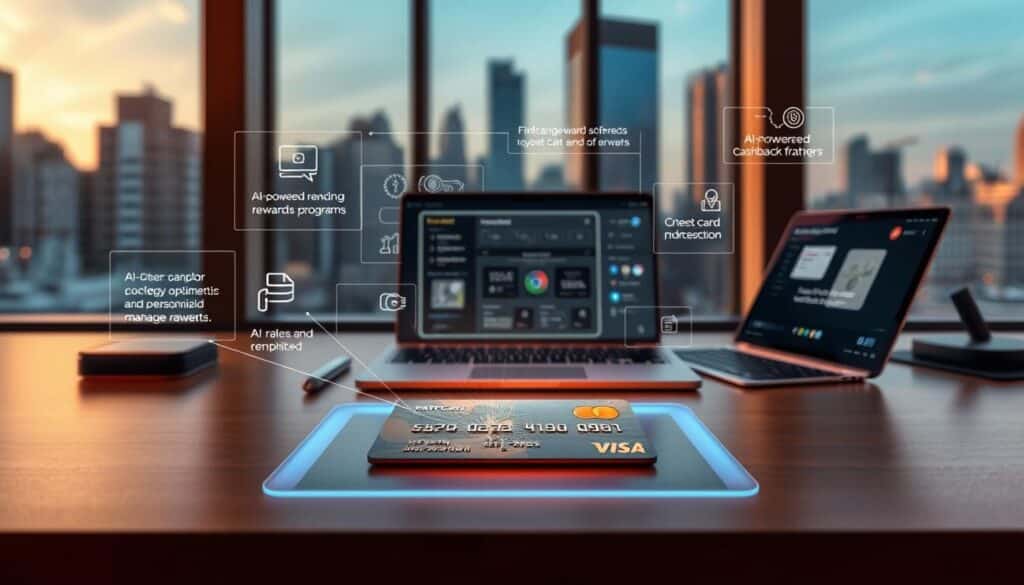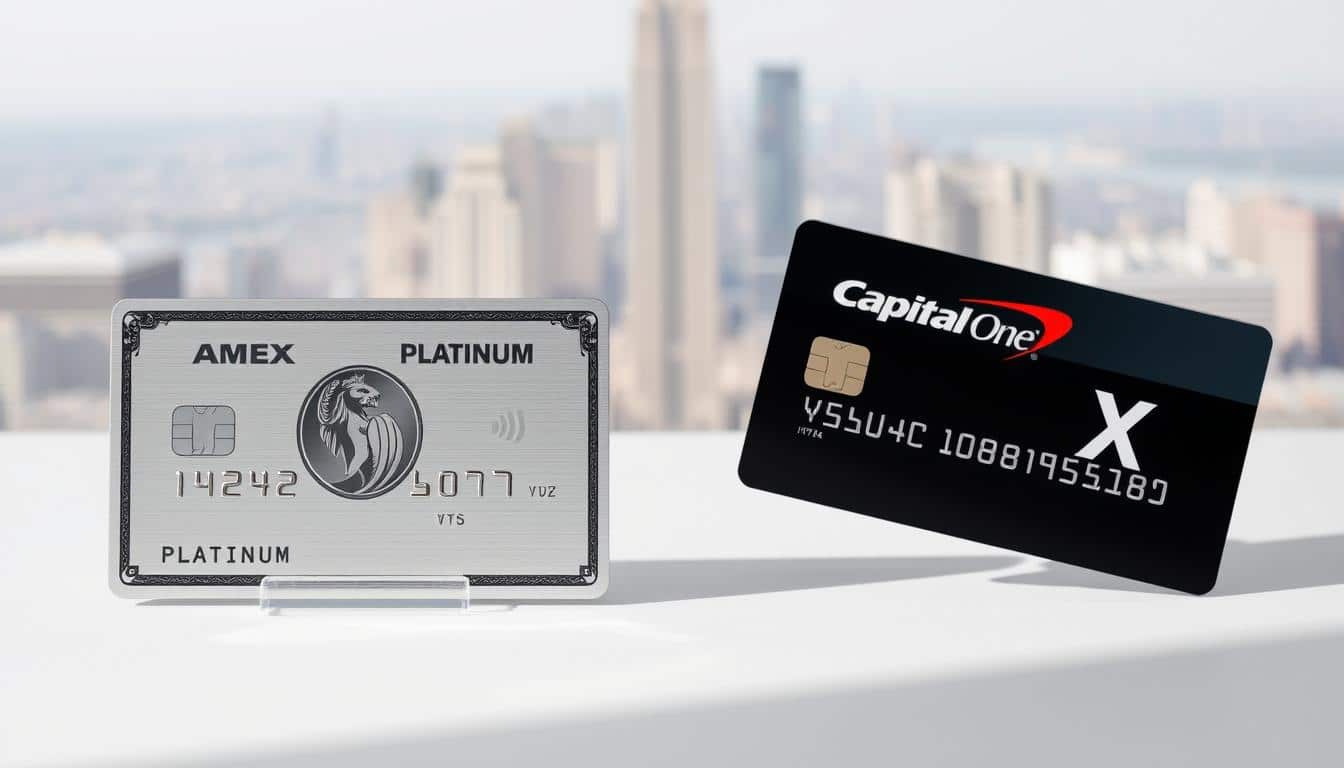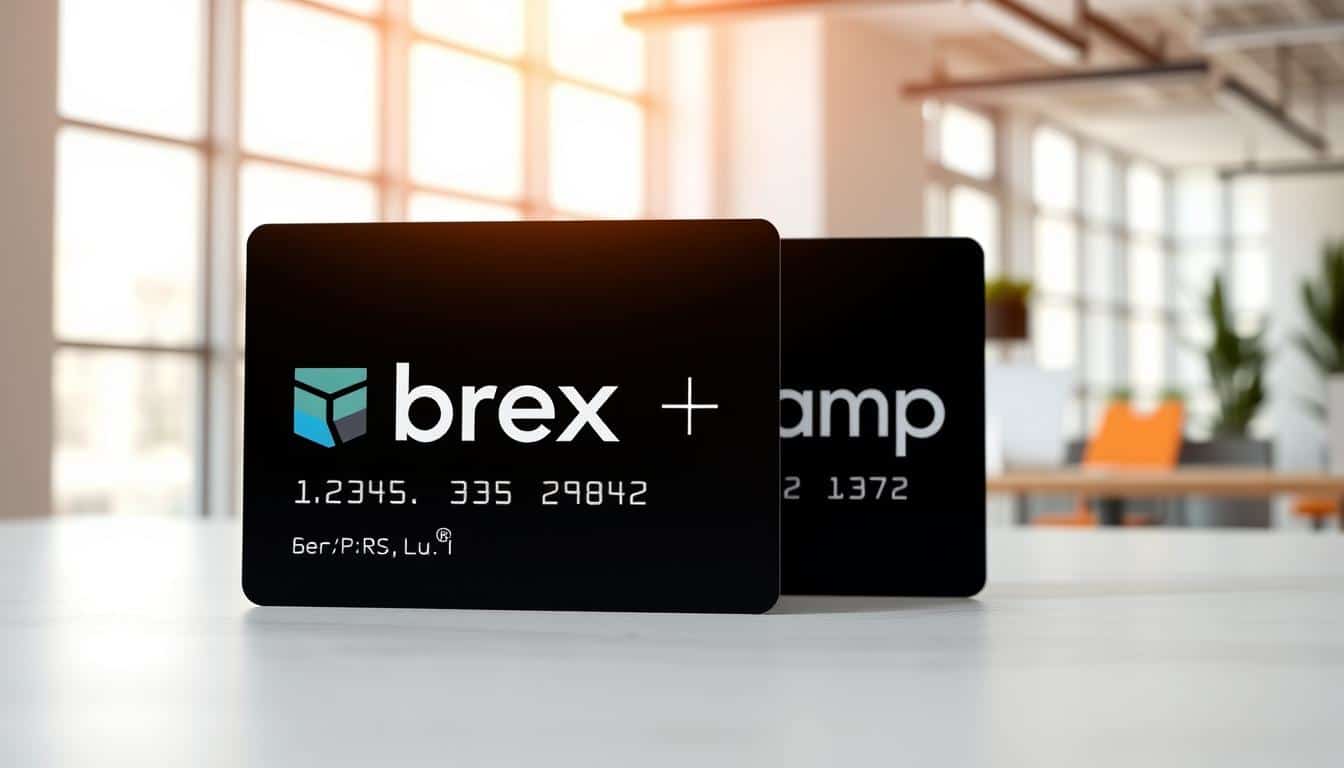AI-Powered Rewards are revolutionizing the way we earn and use cashback. Banks, fintech companies, and stores now analyze our shopping behavior. They use this data to create offers that really match what we need. This change makes cashback deals timely and relevant, not annoying.
Anúncios
By 2025, more and more people are using these services. American Express and Chase are rolling out special deals. Stripe and Square make it easier for stores to offer you custom deals at the checkout. Fintech companies like Affirm and Cleo are experimenting with ways to get people more involved. And loyalty programs like Rakuten and Honey use AI to suggest even better savings.
This article will take a deep dive into how AI rewards systems work. It will cover the advantages of personalized credit card offers and share examples of successful programs. You’ll get tips on picking the best cashback card for 2025. Also, learn how to make the most of your rewards with AI tools. Plus, understand the importance of privacy and security when using these programs. The aim is to offer clear, helpful advice for U.S. shoppers on using AI rewards.
Key Takeaways
- AI Rewards: Future of Cashback and Personalized Offers makes rewards more relevant and easier to use.
- AI-Powered Rewards use transaction and behavior data to tailor offers in real time.
- Personalized credit card offers raise card value and encourage smarter spending.
- Smart credit card rewards combine issuer programs and fintech tools for better returns.
- Privacy and security remain central as adoption grows across banks and merchants.
What Are AI-Powered Rewards and How They Work
AI-Powered Rewards are advanced loyalty programs that use artificial intelligence. They analyze big data to provide smart savings. This tech looks at things like shopping history and location to give you deals and cashback that match your interests.
There are several types of programs. Some are from banks like Chase, while others are from stores such as Walmart. There are also third-party platforms like Rakuten. Each one connects your buying habits to rewards that matter to you.
Defining AI-Powered Rewards
These systems transform transaction data into rewards. They sort your spending into categories to figure out where you should get more back. The result? Offers that change over time and coupons that match what you like.
Key technologies behind AI rewards
- Machine learning sorts spending and improves offer strategies over time.
- Natural language processing makes sense of merchant info and customer feedback to fine-tune offers.
- Predictive analytics predicts buying habits to make offers more relevant.
- Real-time tech sends offers just when you’re ready to buy, increasing sales.
How transaction data and user behavior enable personalization
Details of your purchases pinpoint where you might want cashback. Things like where you shop and what you buy show your daily habits. Spotting these trends, systems can offer you more back on things you actually buy.
Your actions add more clues. Where you go online and how you use apps suggest what deals you’d like. Combining all this info, platforms give you deals that feel made just for you.
Privacy is key in these processes. Techniques like anonymization protect your info while making rewards both powerful and safe.
Benefits of Personalized Credit Card Offers for Consumers
AI changes how we find the best deals on cards. Personalized offers help us see the deals that fit our real spending. For example, if you love dining out, you’ll find more restaurant deals. And big families might see more cashback on groceries.
Companies like American Express and Chase use special deals to make promotions better for you. This way, the card seems more valuable.
Personalization helps you save more by offering cashback and discounts when you need them. AI can suggest special cashback at certain stores or for limited times, which is better than standard offers.
When rewards adjust to what you actually buy, you save more. Following AI suggestions can lead to bigger refunds than sticking to fixed rewards.
Finding deals becomes easy when it’s automatic. With a single tap, you can join deals, and apps like Mint or NerdWallet suggest the best card for each buy. This means no more looking for coupons on your own.
AI also makes sure you don’t miss good deals. You get alerts for special cashback opportunities and personalized offers when you sign up. These offers are based on how you really use your card.
Here’s a quick look at how AI personalization helps, and some real examples:
| Consumer Benefit | How AI Delivers | Real-World Example |
|---|---|---|
| Higher relevance | Analyzes transaction history to surface merchant-specific offers | Chase in-app deals highlight nearby dining offers based on past visits |
| Improved savings | Creates limited-time category boosts and dynamic cashback rates | Rotating category optimization yields larger annual cashback than flat rates |
| Time savings | Auto-enrolls or suggests single-tap activation for deals | American Express targeted offers appear in app with one-tap activation |
| Better onboarding value | Tailors sign-up bonuses and early retention offers to expected spend | Personalized welcome offers increase first-year rewards |
| Fewer missed rewards | Push alerts when thresholds or limited windows are near | Bank apps notify users before bonus categories expire |
When we use these benefits wisely, we get the most out of our credit cards. Personalized offers guide our spending to better rewards. It helps us make the most of AI in getting cashback and special offers.
AI Rewards: Future of Cashback and Personalized Offers

Cards and apps are finding new ways to provide value. AI-Powered Rewards are changing how programs work. They are moving away from fixed levels to rewards that fit the moment and place.
Using mobile wallets and push notifications will become more essential. They bring offers directly at the time of purchase. Technologies used by Visa and Mastercard help start these rewards right away. This is shaping the future of cashback programs.
Trends shaping adoption
- Dynamic boosts for routine purchases and habit-based bonuses.
- Real-time, location-aware deals pushed to users at checkout.
- Payment-rail integration for seamless, tokenized offers.
How personalization will change redemption and loyalty models
Soon, credit card offers will provide instant value. Things like micro-rewards and in-app credits make saving feel immediate and valuable. People might start preferring these small rewards to saving up travel points.
AI will bring different brands together for rewards, too. For instance, someone who often flies with certain airlines might get bonus miles. This way, partnerships can become more meaningful and engaging.
Projected impact on consumer finances and merchant partnerships
Shoppers could save more money that fits their budgets better. Instant rewards make spending and saving simpler. However, there’s a chance that too many offers could spread loyalty thin.
Merchants can more accurately find new customers. AI helps small businesses by finding the right customers for cashback rewards. Sharing revenue through card-linked offers benefits both merchants and card issuers.
As more money from ads goes into rewards, the economy could shift. This affects how banks and fintech companies set prices for reward programs.
Smart Credit Card Rewards: Examples and Use Cases
Banks and fintechs now use AI to offer rewards that match your shopping habits. American Express and Chase use this tech to give you deals based on what you buy. This means you get offers that really fit what you like to spend money on.
Companies like Cardlytics and Rakuten work with lots of stores to give you cash back right when you pay. Capital One and Discover suggest the best ways to use your points or cash back. It’s a smart mix of bank tech and store offers working together.
AI helps pick the best card for buying food or filling up your car. It compares cards to find which gives you the most rewards. This makes saving money on everyday things easier.
For travel, there are special credits and bonuses. Co-branded airline and hotel cards offer deals for your trips. They might give you extra points or money back for your next flight or hotel stay.
Subscriptions like Spotify or Netflix can get you extra card benefits. AI finds the best card for these monthly payments. Using one card for all your subscriptions makes things simpler and boosts rewards.
Small businesses benefit from specific deals aimed at attracting new customers. Restaurants might give more cash back on slow nights. Stores use special offers to clear out seasonal items at just the right time.
Local shops use platforms like Cardlytics to target nearby spenders and see the results. These careful ad campaigns let them fine-tune their deals. It helps turn more browsers into buyers.
Shoppers looking for the top cashback card in 2025 should keep an eye on AI rewards. Real examples show these modern features make spending on everyday needs, travel, subscriptions, and shopping with small stores more rewarding.
How to Choose the Best Cashback Credit Card 2025 with AI Features
Choosing the best cashback credit card for 2025 takes more than looking at reward percentages. You should find a card that combines great rewards with advanced technology. AI-Powered Rewards offer deals exactly when you need them. Check the card issuer’s details and app guides to understand how it personalizes for you.
- Personalization capability: Confirm the issuer uses machine learning to create personalized credit card offers and to adjust reward rates based on your habits.
- Flexibility: Check whether rewards can be redeemed as statement credit, direct deposit, or gift cards and whether categories are fixed, rotating, or adaptable.
- Fee structure: Compare annual fees to the likely value from AI-driven perks. Some cards justify fees when predictive offers and boosts exceed cost.
Comparing rewards
- Base vs boosted rates: Compare steady base rates with targeted boosts and promotional categories.
- Category coverage: Verify coverage for groceries, gas, dining, travel, and streaming or subscription services.
- Signup bonuses: Look for bonuses tailored by AI to your predicted spending pattern rather than one-size-fits-all offers.
Evaluating AI-driven tools
- Predictive offers: Test how well the app suggests deals that match your needs. App demos and user reviews from Bank of America, Chase, and American Express can reveal accuracy.
- Alerts and optimization: Ensure the app sends real-time push alerts for limited-time boosts and gives guidance on which card to use for each purchase.
- Transparency and control: Prefer issuers that explain how offers are chosen and let you adjust personalization settings and data sharing preferences.
Use comparison tools from NerdWallet, The Points Guy, and Credit Karma to sort cards by their AI features and special deals. Signing up and watching how things go for the first few months is a smart move. This helps you see the real benefit of personalized offers and AI-Powered Rewards. Keep an eye on statement credits, how easy it is to redeem them, and if the alerts are timely to ensure the card meets your expectations.
Maximize Credit Card Rewards with AI Tools and Strategies
AI-Powered Rewards change the way you earn and use points. Making small adjustments in spending and timing boosts your benefits. Apps from Capital One and Chase show where you can get more rewards.

Using AI recommendations to shift spending into higher-reward categories
Use app suggestions to move spending into better reward categories. This approach helps you get more from your credit card rewards.
Search for special offers in apps. These deals give you extra rewards for a short time.
Timing purchases and optimizing redemption for maximum value
Wait for AI to signal before making big purchases. This can get you better deals during sales or special events.
When redeeming points, go for options with the highest value. Sometimes, converting points or using instant credits is better.
Combining offers across cards and loyalty programs using AI
Combine card rewards with other discounts for more savings. Use tools that pick the best savings combo for you at checkout.
Automate your card choice for every purchase to maximize rewards. This saves time and increases the benefits you get.
Keep an eye on your savings and consider annual fees. It’s important not to spend extra just for rewards. Using credit card rewards wisely means sticking to your budget and avoiding unnecessary risks.
Privacy, Security, and Ethical Considerations of AI Rewards
AI-Powered Rewards add value for cardholders and businesses. They must keep a balance between innovation and privacy. This means putting strong privacy and security practices in place. This is crucial for keeping trust with consumers. Below, we will explore the best ways to do this, including technical steps and ethical guidelines for making credit card offers personal.
Data privacy best practices and regulatory landscape in the United States
Financial companies need to stick to the Gramm-Leach-Bliley Act (GLBA). They should also pay attention to state laws like the California Consumer Privacy Act (CCPA) and California Privacy Rights Act (CPRA). Making consent clear and using simple language in disclosures helps customers. This lets them know how their data is used for personalized credit card offers.
They should also use as little data as needed and not keep it longer than necessary. When they can, companies should use grouped or hidden data instead of personal info. This reduces risk while still giving valuable insights for AI-Powered Rewards.
Security measures to protect transaction and personal data
It’s important to encrypt data whether it’s stored or being sent. Also, using tokenization for payment information is smart. Securing APIs with things like OAuth and conducting regular security checks with third parties is key. These measures protect both the companies that issue cards and the people who use them.
Deploying models that can detect fraud and unusual activity is crucial. Thinking about processing data on devices directly and using federated learning helps. This keeps sensitive data off central servers but still improves rewards.
Ethical use of personalization and avoiding discriminatory practices
It’s important to check models for bias and ensure they don’t unfairly impact certain groups. Being open about how and why offers are made can prevent unfair practices. This is crucial in personalized credit card offers.
It’s also vital to use behavioral prompts wisely. Avoid tactics that make people spend more than they should. Make it easy for users to opt out and ensure equal access to basic rewards. This prevents AI-Powered Rewards from putting vulnerable customers at a disadvantage.
People can protect their privacy by checking app settings, sharing less data, and watching for odd charges. These steps enhance privacy and security. They also let people enjoy customized rewards without worry.
| Area | Best Practice | Example |
|---|---|---|
| Regulatory Compliance | Follow GLBA, CCPA/CPRA; publish data-use policies | Bank of America-style disclosures and opt-in choices |
| Technical Security | Encryption, tokenization, secure APIs, audits | Tokenized card numbers and quarterly penetration tests |
| Privacy-Enhancing Tech | Federated learning, on-device models, anonymization | Model updates from device data without central raw data |
| Fraud & Abuse Prevention | Anomaly detection, real-time monitoring, rate limits | Automated flags for unusual redemption patterns |
| Ethics & Fairness | Bias audits, transparent criteria, opt-out options | Independent model review and published offer logic summaries |
Future Challenges and Opportunities for Banks and Fintechs
Banks and fintechs have a tough journey ahead as they grow AI-Powered Rewards. They often hit a wall with old systems that can’t process transactions quickly. They need to combine different data sources, link customer information, and follow privacy rules while staying fast.
They face big challenges in upgrading their systems. Moving to new tech like Kafka and making machine learning work in real-time is expensive and time-consuming. They also need to be smart about recognizing users and efficiently moving data to create timely offers.
Staying ahead means making services personal and winning users’ trust. Businesses that offer easy ways to get rewards and understand their customers’ value will see better sign-up and stay rates. Using technologies from Visa and Mastercard, they can make reward programs even better.
Partnerships are key to success. By working together, card companies, stores, ad businesses, and data specialists can share the load. Deals that make everyone’s goals match up are crucial, especially in promoting card-linked savings.
Team-ups in staying within the law and protecting privacy are crucial too. Partnering with experts in identity and privacy helps them share data safely. This keeps customers happy and avoids trouble with the law, which is important for growing AI-Powered Rewards.
The path forward is clear for banks. They should update their systems and work with nimble fintechs to get rid of old tech burdens. Being open about privacy and getting clear permission from users will make technical improvements real benefits for banks and fintechs.
| Challenge | Technical Response | Business Outcome |
|---|---|---|
| Legacy core systems | Cloud migration, streaming ML pipelines | Faster, context-aware offers and reduced latency |
| Data silos and identity resolution | Unified ETL, identity graphs, consent management | Accurate personalization and compliant data use |
| Cost of migration | Phased modular APIs and fintech partnerships | Lower upfront spend with faster time-to-market |
| Delivering superior personalization | Proprietary merchant networks, advanced LTV models | Higher card activation and improved retention |
| Monetization and partnerships | Card-linked offers, revenue share, subscription models | Diverse revenue streams and aligned incentives |
Conclusion
AI Rewards are changing how we get value from cards. They use our buying habits, smart tech, and clever predictions. This way, banks and fintech companies give offers that truly fit what we spend on. We get cashback and discounts that matter, helping us choose wisely.
This is great news for people in the U.S. You save more, don’t waste time searching, and make smarter choices with credit card rewards. Look for companies that explain their AI use. Try their features carefully before putting a lot of money in. Always keep your financial goals in mind, and don’t just shop for points.
But, there are things to think about. Issues like privacy, bias in AI, and keeping your data safe are big deals. Use the privacy settings, keep an eye on your accounts, and remember, AI tips are just advice. With the right attitude, you’ll find the top cashback credit cards for 2025. They’ll give you personalization, clear info, and true value.
FAQ
What are AI-powered rewards and how do they differ from traditional cashback programs?
How does AI use my transaction and behavioral data to personalize offers?
Which brands and platforms are leading the adoption of AI rewards in 2025?
What practical benefits can consumers expect from personalized credit card offers?
How can I choose the best cashback credit card in 2025 that uses AI features?
How do AI tools help me maximize credit card rewards day-to-day?
Are there privacy or security risks with AI-powered rewards?
Could AI personalization lead to unfair or discriminatory outcomes?
How do merchants and small businesses benefit from AI-driven card offers?
Will AI rewards change loyalty and redemption models in the future?
What technical challenges do banks and fintechs face when deploying AI rewards?
How can I protect myself from being targeted for offers that encourage overspending?
Are AI-powered rewards automatically better than traditional reward programs?
How do card-linked offer networks like Cardlytics or Rakuten fit into AI rewards?
What steps should I take to evaluate an issuer’s AI features before applying for a card?
Conteúdo criado com auxílio de Inteligência Artificial



